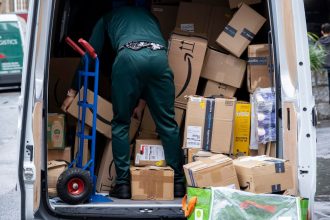- Dick’s Sporting Goods reported a 23% decline in quarterly profits, due in large part to theft.
- CEO Lauren Hobart called shrink “an increasingly serious issue impacting many retailers.”
- The company was surprised during an annual review when more inventory was missing than expected.
Dick’s Sporting Goods is the latest retailer to reveal the financial impact of retail theft on its business.
The company posted a 23% decline in quarterly net profits compared with the same period last year, attributing a significant portion of the shortcoming to unexpectedly high rates of inventory shrink.
“The impact of theft on our shrink was meaningful to both our Q2 results and our go-forward expectations for the balance of the year,” CEO Lauren Hobart said on the earnings call on Tuesday.
Shares of Dick’s stock fell by 25% as investors reacted to the disclosure, erasing about $3 billion from the company’s market cap.
Hobart and CFO Navdeep Gupta explained that Dick’s discovered the true scale of the missing merchandise during an annual inventory audit, which the company typically does ahead of the back-to-school shopping season.
“We thought we had adequately reserved for it. However, the number of incidents and the organized retail crime impact came in significantly higher than we anticipated,” Gupta said.
Gupta said inventory shrink accounted for one-third of the decline in merchandise profits. In dollar terms, that equates to a shortfall of approximately $15 million, based on the company’s financial statements.
“We had been seeing the number of incidents go up, but quantification of that gets done as part of the physical inventory process,” Gupta said.
While theft is the largest contributor to inventory shrink, the figure also includes merchandise lost to damage or other errors.
“Shrink is an industry-level problem — it’s actually a problem for our entire country,” Hobart said. “It’s something that we all need to work together on with our partners, with our trade organizations, and with our government.”
The National Retail Federation estimates that retail shrink cost retailers a combined $94.5 billion in 2021, up from $90.8 billion in 2020.
Amid “alarming” reports of retail crime, Hobart said her priority is chiefly on keeping employees and customers safe with stepped-up security investments, as well as coordination with law enforcement and industry partners.
Even with the higher rate of shrink, Gupta said the company is in better shape now than it was just a few years ago.
“If shrink does take that down slightly, this overall story does not change,” he said.
Read the full article here





